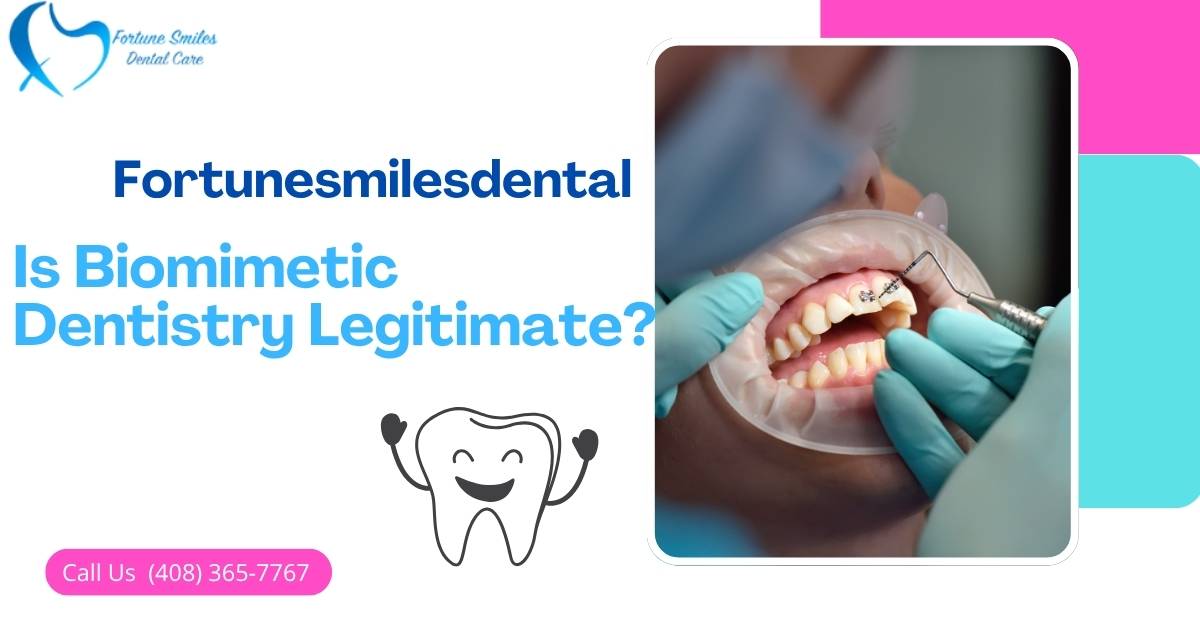Biomimetic dentistry, sometimes called biomimetic restorative dentistry, originates from the concept of mimicking natural tooth structure—enamel and dentin—in both form and function. The term “biomimetic” (meaning “imitating nature”) was popularized in dental science in the early 2000s by Dr. Pascal Magne and Urs Belser. Today, biomimetic techniques are built on decades of adhesive dentistry research focusing on minimizing invasiveness and maximizing preservation.
What Does “Legitimate” Mean in This Context?
Legitimacy in dentistry hinges on scientific evidence, safety, peer-reviewed research, and professional adoption. So, is biomimetic dentistry legitimate? Across multiple studies and practitioner testimonies, the answer is overwhelmingly yes—but with the usual caveats.
Scientific Support & Clinical Evidence
-
A narrative review in the Journal of Applied Oral Science details that biomimetic restorative approaches offer improved outcomes, reduced invasiveness, and more durable restorations compared to conventional adhesive techniques.
-
Practitioners and educators like the Alleman Center have distilled over 1,400 research articles into a cohesive Six Lessons Approach, reinforcing that biomimetic protocols have solid academic and clinical foundation.
-
Clinically, biomimetic restorations achieve 90%+ success rates over 10+ years, reduce tooth sensitivity, and preserve natural structure—leaving fewer patients needing crowns or root canals (Wikipedia).
These findings indicate that biomimetic dentistry isn’t a fringe trend—it’s rooted in evidence-based dentistry and long-term patient outcomes.
Debunking Myths & Acknowledging Criticism
A common blog post addresses myths surrounding biomimetics—like claims that it’s too pricey, time-consuming, or ineffective versus root canals. In reality, these procedures can be faster, more cost-efficient overall, and equally (if not more) durable than traditional alternatives.
However, a critical voice from a 2024 narrative review raises valid concerns: certain practices (such as over-aggressive caries dye use or unnecessary enamel beveling) may lead to overtreatment. These findings highlight the importance of critical selection of techniques and continuous scientific scrutiny.
What Practitioners & Peers Are Saying
On Reddit’s r/Dentistry, one dentist succinctly noted that biomimetic dentistry is essentially adhesive dentistry with enhancements—such as margin elevation and stress-reducing protocols. This aligns with mainstream sentiment: biomimetic approaches are neither gimmicks nor entirely new, but evolved, evidence-based improvements.
Breaking Down the Benefits
| Material | Why It’s Biomimetic | Benefits for Children |
|---|---|---|
| Glass Ionomer Cement (GIC) | Chemically bonds to dentin/enamel, similar thermal expansion, releases fluoride | Minimally invasive; great for fillings/sealants; supports enamel remineralization |
| Resin‑Modified GIC (RMGIC) | Hybrid of glass ionomer + resin for better strength while maintaining fluoride release | Gentle on sensitive teeth; strong seal; ideal for primary molars |
| Bulk‑fill Composites | High-depth curing and stress‑relieving resin matrices mimic dentin’s behavior | Faster placement = shorter visits; durable, aesthetic restorations |
| Self‑assembling Peptides (e.g., P11‑4) | Forms a protein scaffold that guides enamel‑like mineral deposition | Remineralizes early lesions without drilling; kid‑friendly and painless |
| Silver Diamine Fluoride (SDF) | Antimicrobial arrest of caries; fluoride aids in hardening softened dentin | No drilling or anesthesia; ideal for very young or anxious children |
Final Verdict: Legitimate—but Practitioner-Dependent
Yes, biomimetic dentistry is legitimate. It stands on a foundation of scientific research, clinical success, and growing adoption. It has real advantages in terms of preservation, patient comfort, and long-term outcomes.
However, outcomes depend on the expertise of the dentist. Not all “biomimetic” restorations are created equal—well-trained practitioners using evidence-based protocols make the difference (Alleman Center of Biomimetic Dentistry).

